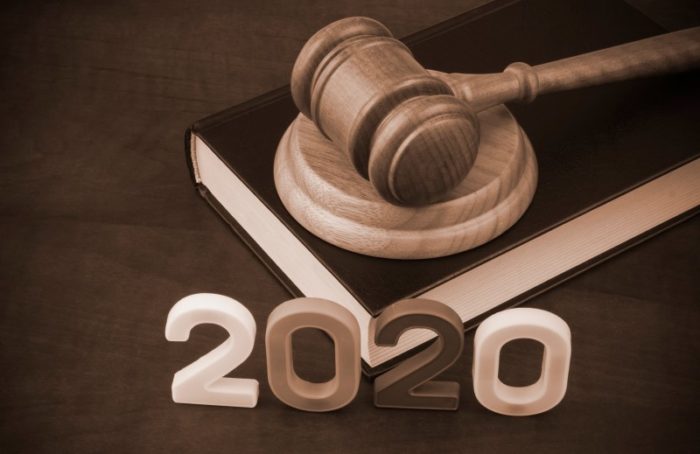
Careful consideration must be taken when examining the methods by which a trust may be effectively amended or revoked. In the recent appellate case, Balisteri v. Balisteri, the Court of Appeal held that when a trust modification method is specified in the trust instrument as a method of amendment, that method must be followed exactly for the amendment to be effective.
Case Background: Balisteri Court Rules Trust Amendment to Be Invalid After Trustors Fail to Follow Their Specified Trust Modification Method
Mary A. Nivala Balisteri (“Mary”) and Sal Balisteri (“Decedent”) were married and had one child together, Julia Balisteri (“Julia”). The Decedent also had two children from a prior marriage; namely, Sal Balisteri (“Sal”) and Christina Balisteri (“Christina”). On September 6, 2017, Mary and the Decedent created the Balisteri Family Trust (“Trust”). Mary and Decedent transferred their real property in San Francisco (“Property”) to the Trust, which provided that upon the Decedent’s death, the Property shall be distributed equally among Julia, Sal and Christina.
The Trust contained a reservation of rights provision in which Mary and the Decedent agreed that the Trust “may be revoked or terminated, in whole or in part, by either of us…” and “may be modified and amended…by both of us acting jointly as to any of our community property.” This provision, however, required that any amendment, revocation or termination “shall be made by written instrument signed, with signature acknowledged by a notary public, by the trustor(s) making the revocation, amendment, or termination, and delivered to the trustee.” Notably, this provision did not explicitly state that it was the exclusive method for revocation or modification of the Trust.
In February 2020, Mary and Decedent signed a document titled “First Amendment to Trust,” which amended the Trust to delete any outright distribution of the Property upon the Decedent’s death to Julia, Sal and Christina, and instead provided that the Property “shall remain in the Trust.” Importantly, while Mary and Decedent both signed the First Amendment, they failed to have it notarized. The Decedent regrettably passed away the next day.
Reservation of Rights Language Prevents Trust Modification Using Procedure From California Probate Code Section 15402
Mary filed a petition for an order confirming the validity of the First Amendment. Sal filed a response and his own petition to invalidate the First Amendment to Trust. Sal argued that the First Amendment to Trust was void because it was not executed in accordance with Probate Code section 15402, which states that “unless the trust instrument provides otherwise, the settlor may modify the trust by the procedure for revocation.” The trial court found that the First Amendment to Trust was void because the Decedent’s signature was not notarized pursuant to the Trust; Mary’s petition, therefore, was denied.

Brief Summary of the Applicable Statutes Governing Revocation and Modification of Trusts
On appeal, the court outlined the ways in which the Probate Code governs trust revocation and modification.
Probate Code section 15401 sets forth two methods for trust revocation, whereas Probate Code section 15402 governs trust modification.
Probate Code section 15401(a) provides that a trust may be revoked either (1) by compliance with any method of revocation provided in the trust instrument, or (2) by a writing, other than a will, signed by the settlor or any other person holding the power of revocation and delivered to the trustee during the lifetime of the settlor or the person holding the power of revocation.
Trust Revocation When Method Is Exclusive
However, if the trust instrument explicitly makes the method of revocation provided in the trust instrument the exclusive method of revocation, those trust instructions must be used.[1] To do so, the trust must contain an “explicit statement that the trust’s revocation method is exclusive.”[2] Therefore, Probate Code section 15401(a)(2) provides a default method of revocation where the trust is silent on revocation or does not explicitly provide the exclusive method for revocation.
Trust Modification When Method Is Non-Exclusive
By contrast, Probate Code section 15402 (concerning trust modifications) states that “unless the trust instrument provides otherwise, if a trust is revocable by the settlor, the settlor may modify the trust by the procedure for revocation.”[3] Under Probate Code Section 15402, when the trust is silent on trust modification, the trust may be modified in the same manner in which it could be revoked, either pursuant to Probate Code section 15401, or as provided in the trust.[4]
Plaintiff Argues That Amendment Should Stand Since Specified Trust Modification Method Was Not Stated as Being Exclusive
On appeal, Mary acknowledged that Probate Code section 15402 applies, but argued that although the Trust required her and Decedent’s signatures to be notarized, since Trust instructions did not explicitly state that this was the exclusive method for revocation or modification of the trust, they were allowed to amend the trust using the revocation procedure set forth in Probate Code 15401(a)(2), which would have deemed their signed writing a valid trust amendment.[5]

A Conflict of Authority Complicates Trust Modification Matters Further
The Balisteri court is quick to note that there is conflicting authority on the issue of whether a trust containing a stated modification procedure may nevertheless be modified using the statutory revocation procedure of California Probate Code section 15401.
In King v. Lynch,[6] the Court of Appeal held that in order to be effective, a trust must be amended according to the method specified in the trust. In King, a married couple’s trust permitted revocation by a writing signed by either settlor, and permitted trust modification as to the community property by a writing signed by both settlors. After one spouse was injured, the other spouse executed several amendments without the other’s signature.
The court in King reasoned that the Legislature knew how to limit the exclusivity of a revocation method provided in a trust and chose not to impose such a limitation on trust modification in Probate Code section 15402. Thus, the King court further reasoned that Probate Code section 15402’s qualification “unless the trust instrument provides otherwise” indicated that if any modification method is specified in the trust, that method must be used to amend the trust.
On the other hand, the Court of Appeal in Haggerty v. Thornton[7] held that a settlor could use the statutory procedure for modification of a trust under Probate Code 15401, where the trust instructions do not provide that its stated trust modification procedure was the exclusive method for modification.
The Balisteri Court Expressly Departs from Haggerty v. Thornton
In Haggerty, reservation of rights language in the trust provided that the settlor may amend or revoke the trust by an acknowledged instrument in writing. The settlor drafted and signed an amendment but did not have the amendment notarized. Nonetheless, the court determined that the settlor could amend the trust pursuant to the revocation procedure set forth in Probate Code section 15401.
The Haggerty Court held that an amendment pursuant to California Probate Code section 15401(a)(2) (a writing signed and delivered to the trustee) is available to the settlor unless the trust explicitly provides that the method of amendment set forth in the trust is the exclusive method of amendment. The Haggerty court criticized the court’s decision in King, which limited trust amendments to only the method for trust modification set forth in the trust instructions, even if the trust does not specify that the method in the trust is exclusive.
However, the court in Balisteri ultimately reached a different conclusion from the court in Haggerty.[8] The Balistreri court disagreed that Probate Code Section 15402 requires the trust instrument to explicitly state that the method for amendment is exclusive to prevent trust modification under the method set forth in Probate Code 15401. The Court noted that the text of Probate Code section 15402 contains no such requirement of exclusivity, unlike the text of Probate Code section 15401, which governs revocation. Rather, the court concluded that the simpler construction of the text of Probate Code section 15402 is preferable, especially because it does not infer requirements that do not appear in the statutory language.
Following King’s reasoning, this court found that the most plain and straightforward reading of Probate Code section 15402 is “that when a trust provides for the use of a specific modification method, that method must be used.”
Balisteri Court Holds That Settlors Expressed an Intent to Be Bound to a Particular Trust Modification Method
The Balisteri court also discussed that by including a requirement in the Trust that any amendments to the Trust must be notarized, Mary and the Decedent expressed an intent to bind themselves to that trust modification method — indeed, a method they had repeatedly utilized in amending and revoking prior trusts — and they were not entitled to cast aside that procedure and amend the Trust using the revocation procedure set forth in California Probate Code Section 15401(a)(2).
Thus, the Court of Appeal affirmed the trial court’s order and held the First Amendment to the Trust was void and of no force and effect.
Key Takeaway: Think Twice Before Specifying Exclusive Trust Modification and Revocation Methods
Practitioners should discuss with their clients the methods by which a trust may be effectively revoked and amended. The drafter of estate planning documents should specify whether the methods of revocation and amendment provided in the trust are the exclusive methods. However, practitioners should be cautious in providing an exclusive method of revocation or amendment, as such provisions are usually unnecessary and may work to defeat the settlor’s intentions.[9] Therefore, to avoid any potential dispute on this issue, the drafter should consider including in the trust instrument whether the statutory methods of revocation and amendment also apply.
This is not going to be the last word on this issue, as the California Supreme Court has granted petitions for review of both the Balisteri and Haggerty decisions, in order to resolve this conflict in the Court of Appeal.[10] We will update our readers with any new developments on this issue once the Supreme Court issues its ultimate decision.
Still Confused About Trust Modification Methods? We Are Here to Help
Do you have doubts about the validity of a trust amendment? Do you suspect trust instructions were not followed when carrying out the process for trust modification or revocation? Keystone’s attorneys are well-versed in all matters probate and can help you get to the bottom of any trust modification or revocation issues. Call us today to request a free consultation.
[1] Pena v. Dey, (2019) 39 Cal.App.5th 546.
[2] Cundall v. Mitchell-Clyde, (2020) 51 Cal.App.5th 571.
[3] Emphasis added.
[4] King v. Lynch, (2012) 204 Cal.App.4th 1186.
[5] Providing that a trust may be revoked by a writing, other than a will, signed by the settlor and delivered to the trustee.
[6] King v. Lynch, (2012) 204 Cal.App.4th 1186.
[7] (2021) 68 Cal.App.5th 1003 (Fourth District).
[8] The California Supreme Court has now accepted review of these matters, in order to resolve this split of decisions between the Court of Appeal. See infra.
[9] CEB On Law, Revocable Trusts, Express Revocation §6.68.
[10] See California Supreme Court, Case Nos. S271483 and S273909.




